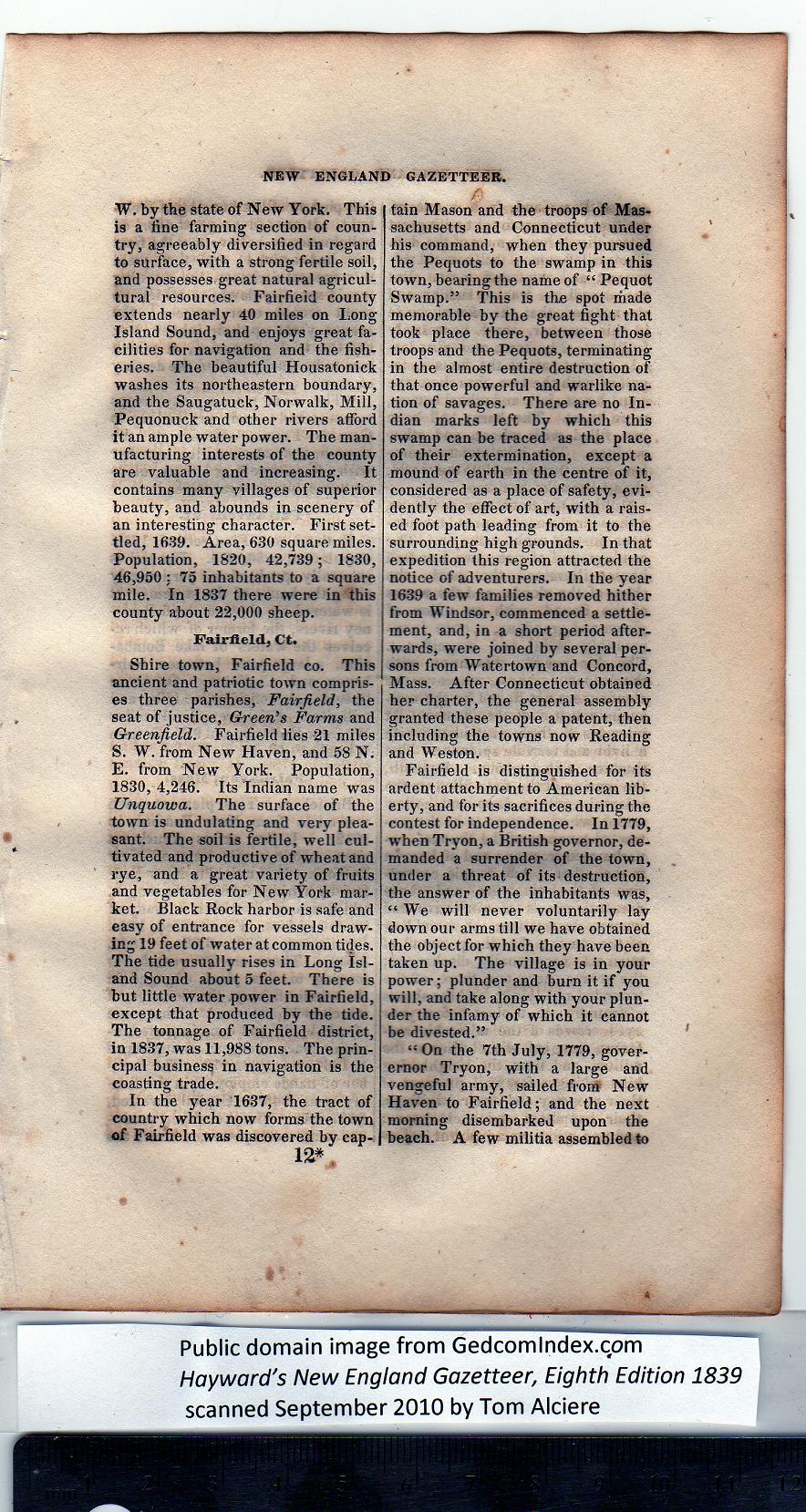|
W. by the state of New York. This
is a fine farming section of coun-
try, agreeably diversified in regard
to surface, with a strong fertile soil,
and possesses great natural agricul-
tural resources. Fairfield county
extends nearly 40 miles on Long
Island Sound, and enjoys great fa-
cilities for navigation and the fish-
eries. The beautiful Housatonick
washes its northeastern boundary,
and the Saugatuck, Norwalk, Mill,
Pequonuck and other rivers afford
it an ample waterpower. The man-
ufacturing interests of the county
are valuable and increasing. It
contains many villages of superior
beauty, and abounds in scenery of
an interesting character. First set-
tled, 1639. Area, 630 square miles.
Population, 1820, 42,739; 1830,
46,950 : 75 inhabitants to a square
mile. In 1837 there were in this
county about 22,000 sheep.
Fairfield, Ct.
Shire town, Fairfield co. This
ancient and patriotic town compris-
es three parishes, Fairfield, the
seat of justice, Green’s Farms and
Greenfield. Fairfield lies 21 miles
S. W. from New Haven, and 58 N.
E. from New York. Population,
1830, 4,246. Its Indian name was
Unquowa. The surface of the
town is undulating and very plea-
sant. The soil is fertile, well cul-
tivated and productive of wheat and
rye, and a great variety of fruits
and vegetables for New York mar-
ket. Black Rock harbor is safe and
easy of entrance for vessels draw-
ing 19 feet of water at common tides.
The tide usually rises in Long Isl-
and Sound about 5 feet. There is
hut little water power in Fairfield,
except that produced by the tide.
The tonnage of Fairfield district,
in 1837, was 11,988 tons. The prin-
cipal business in navigation is the
coasting trade.
In the year 1637, the tract of
country which now forms the town
of Fairfield was discovered by cap-
12* . |
tain Mason and the troops of Mas-
sachusetts and Connecticut under
his command, when they pursued
the Pequots to the swamp in this
town, bearing the name of “Pequot
Swamp.” This is the spot made
memorable by the great fight that
took place there, between those
troops and the Pequots, terminating
in the almost entire destruction of
that once powerful and warlike na-
tion of savages. There are no In-
dian marks left by which this
swamp can be traced as the place
of their extermination, except a
mound of earth in the centre of it,
considered as a place of safety, evi-
dently the effect of art, with a rais-
ed foot path leading from it to the
surrounding high grounds. In that
expedition this region attracted the
notice of adventurers. In the year
1639 a few families removed hither
from Windsor, commenced a settle-
ment, and, in a short period after-
wards, were joined by several per-
sons from Watertown and Concord,
Mass. After Connecticut obtained
her charter, the general assembly
granted these people a patent, then
including the towns now Reading
and Weston.
Fairfield is distinguished for its
ardent attachment to American lib-
erty, and for its sacrifices during the
contest for independence. In 1779,
when Tryon, a British governor, de-
manded a surrender of the town,
under a threat of its destruction,
the answer of the inhabitants was,
“ We will never voluntarily lay
down our arms till we have obtained
the object for which they have been
taken up. The village is in your
power; plunder and burn it if you
will, and take along with your plun-
der the infamy of which it cannot
be divested.”
“On the 7th July, 1779, gover-
ernor Tryon, with a large and
vengeful army, sailed from New
Haven to Fairfield; and the next
morning disembarked upon the
beach. A few militia assembled to |
